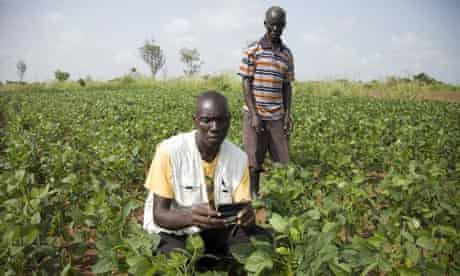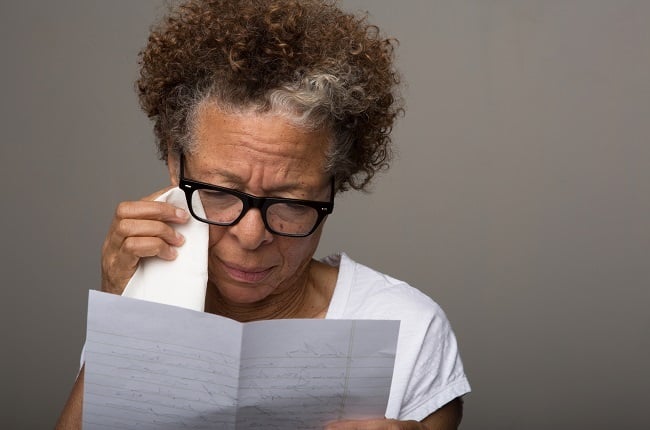Exploring the Intersection of Masculinity Definition and Sustainable Development Goals
Exploring the Intersection of Masculinity Definition and Sustainable Development Goals
Understanding the interplay between masculinity definition and the United Nations Sustainable Development Goals (SDGs) presents a crucial path towards addressing systemic gender inequalities and fostering environmental sustainability. As the Gender Snapshot 2023 reveals, the ambition for gender equality under SDG 5 is critically off track, illuminating the persistent challenges in dismantling gender-based discrimination that threatens the comprehensive fulfillment of the 2030 Agenda [1]. This intersectionality accentuates the compounded hurdles formed by various forms of inequality, emphasizing the necessity for a more inclusive approach to achieving global goals that combat gender inequality, poverty, and environmental degradation [2].
Exploring the multifaceted aspects of masculinity—ranging from toxic masculinity to young masculinities—and their correlation with feminism, gender equality, and gender identity offers insight into the cultural and societal constructs that perpetuate gender-based violence and hinder progress towards the SDGs. This article aims to delve deeply into how patriarchal systems impact gender inequality and environmental issues, highlight the transformative role men can play in promoting gender equality, and underscore the interconnectedness of achieving gender equality with the success of all SDGs. Through discussing challenges and showcasing case studies of successful male engagement in SDGs, the discourse seeks to chart a course for redefining masculinity characteristics in a way that contributes positively to societal development and sustainability [1][2][3][4].
Understanding Masculinities within the Context of SDGs
Gender Equality and Sustainable Development: Goal 5 of the SDGs aims to achieve gender equality and empower all women and girls [5]. This goal is not isolated but a cross-cutting feature essential for catalyzing progress across all other SDGs, as gender equality is fundamental in realizing women’s and girls’ rights [6]. The pervasive nature of gender inequalities affects sustainable development in every dimension, including economic participation and access to resources [3].
Impact of Environmental Degradation on Women: Environmental challenges such as droughts, floods, and deforestation disproportionately burden women, who often bear the primary responsibility for managing household water and fuel supplies [3]. Addressing these inequalities is crucial not only for achieving gender equality but also for effective climate change mitigation and adaptation strategies.
Masculinities and Health Risks: Social norms and expectations around masculinity can increase health risks for men and reduce their health-seeking behaviors [7]. Harmful expressions of masculinity, including violence and risky sexual behaviors, not only affect men’s health but also have broader social consequences, impacting women and community health [7]. Understanding these dynamics within the specific local contexts is essential for effective interventions [7].
UNDP’s Gender Initiatives:
Strategic Plans and Gender Equality: The UNDP’s Strategic Plan (2022-2025) emphasizes Gender Equality and the Empowerment of Women as pivotal for accelerating progress towards all SDGs [8]. This includes addressing adverse consequences of unfair gender roles and making gender equality a universal responsibility [8].
Engaging Men and Boys: UNDP has been actively engaging men and boys in gender equality programs, focusing on preventing gender-based violence and promoting shared responsibilities in care work [11]. The TMx2 initiative highlights the need to challenge patriarchal power at multiple levels to foster a more equitable society [11].
Social Constructs and Power Dynamics:
Economic and Political Power: Men predominantly hold economic and political power, which influences gender roles and contributes to systemic gender inequalities [12].
Hegemonic Masculinity: This concept refers to practices that promote the dominant social position of men and subordinate the social position of women [12]. It is crucial to address these issues to understand and tackle persistent gender inequalities effectively [12].
New Masculinity: There is a growing movement towards new masculinities, where men actively support gender equality and oppose violence against women, reflecting a shift in social attitudes and behaviors [12].
By examining these aspects, it becomes evident that integrating an understanding of masculinity within the SDGs is vital for achieving gender equality and sustainable development. The approach requires a comprehensive strategy involving policy changes, community engagement, and transformative actions that address both the symptoms and root causes of gender inequalities.
The Influence of Patriarchal Systems on Gender Inequality and Environmental Degradation
The Influence of Patriarchal Systems on Gender Inequality and Environmental Degradation
- Dominance of Men in Environmental and Political Arenas:
Men hold predominant positions in key climate change political arenas, including the United Nations Framework Convention on Climate Change (UNFCC) and Climate Finance Mechanism boards [13].
The fossil fuel industry, which is a major contributor to global emissions, sees male dominance at all levels from operational roles to executive boards [14].
This male control extends to the military, which is not only a traditionally male institution but also significantly contributes to environmental degradation due to its high energy consumption [14]. - Disproportionate Impact of Climate Change on Women:
Women, especially in lower-income countries, are often more dependent on natural resources for their livelihoods, yet have lesser access to these resources [15].
Climate change exacerbates this inequality, impacting sectors like agriculture where women predominate, increasing their workload and vulnerability [15] [16].
Disasters such as floods and droughts disproportionately affect women, with higher mortality rates and greater economic losses compared to men [15] [16]. - Systemic Gender Inequalities and Health Risks:
Women and girls face increased health risks due to climate change, including limited access to health services and heightened risks related to maternal and child health [15].
The patriarchal system not only marginalizes women’s roles and voices but also prioritizes men’s economic power, influencing policy and decision-making processes that overlook women’s specific needs and contributions [17]. - Patriarchal Masculinities and Environmental Policies:
Patriarchal masculinities, which emphasize the superiority of masculinity over femininity, contribute to the invisibility of men’s vulnerabilities in climate policies [13].
This results in environmental policies and climate science that fail to address or even acknowledge the specific impacts of climate change on women, further entrenching gender disparities [13].
Engaging men as agents of change is crucial, yet transformational progress will not be achieved unless patriarchal systems that disadvantage women are fundamentally overhauled [12].
By addressing these points, it becomes evident that patriarchal systems not only perpetuate gender inequality but also hinder effective responses to environmental challenges. Engaging with and transforming these systems is essential for achieving both gender equality and environmental sustainability.
Men as Agents of Change in Promoting Gender Equality
Engagement in Climate Initiatives:
Design and Prioritization: Men and women must collaboratively design and prioritize climate change adaptation projects to ensure the initiatives are inclusive and effective [18].
Clean Energy Interventions: It is essential to reach both genders through industrial and household clean energy interventions, which helps in promoting sustainable energy use across different sectors of society [18].
Information and Training Accessibility: Making climate change adaptation and mitigation training, technologies, and information accessible and relevant to all stakeholders, regardless of gender, enhances community resilience and capacity [18].
Policy and Strategy Integration:
National Strategies: Incorporating gender considerations into national climate change strategies and ensuring regulations are gender-sensitive are crucial steps towards equitable climate action [18].
Paris Agreement Compliance: The commitment to making climate action gender-responsive under the Paris Agreement highlights the importance of including gender equality and women’s empowerment in environmental policies [19].
UNDP Initiatives:
Male Peer Groups: The creation of male peer groups by UNDP facilitates reflection and collective action towards organizational change, emphasizing the role of men in advancing gender equality [8].
Challenging Biases: UNDP’s efforts to work closely with men in power aim to challenge existing biases and promote systematic investments to engage men in conflict and crisis contexts for gender equality [8].
Promoting Gender Equality through Male Actions:
Leadership Advocacy: Men in leadership positions can advocate for policies that ensure gender equality and equal representation in decision-making processes [21].
Economic Empowerment: Supporting women’s economic empowerment through advocating for equal pay and access to financial resources is a vital role that men can play [21].
Household and Caregiving: Men participating in household chores and caregiving responsibilities promote a more equitable sharing of unpaid work, supporting a balanced domestic environment [21].
Collaborative Efforts and Accountability:
Supporting Women’s Organizations: Men can enhance gender equality by supporting and collaborating with women’s organizations and networks [21].
Addressing Sexist Behaviors: Holding other men accountable for sexist attitudes and behaviors contributes to fostering a culture of respect and non-violence [21].
Transforming Masculinities Initiative:
Faith-Based Approach: The Transforming Masculinities program in the DRC engages religious leaders and communities to promote gender-equitable behaviors and positive masculine identities [22].
Community Dialogues: Engaging newly married couples and first-time parents in community dialogues helps in reinforcing gender equality and connecting families to essential health services [22].
Peer Mentoring: Gender Champions, selected by faith leaders, act as change agents and peer mentors, advocating for family planning and non-violence within families [22].
Structural and Systemic Engagement:
Behavior and System Changes: Working with men and boys to challenge patriarchal masculinities in key sectors such as energy and agriculture involves altering behaviors and systems to protect families and economies while being held accountable [13].
Inclusive Climate Policies: Identifying barriers to equitable climate change solutions and ensuring women’s voices are central to outcomes is essential for effective policy-making [13].
UNODC Gender Strategy:
Men as a Target Group: Recognizing men as a specific target group underrepresented in gender equality efforts, UNODC has launched initiatives to increase male engagement and activate their potential in advancing gender equality [23].
Engagement Events: Past events like Engaging Men for Gender Equality at UNOV/UNODC highlight the ongoing efforts to involve men in promoting gender equality [23].
The Role of Men in Climate Change Mitigation and Adaptation
Understanding the Gendered Impacts of Climate Change:
Differential Experiences: Men and women experience the impacts of climate change differently due to varying roles, responsibilities, and access to resources. Men often hold power in climate change political arenas, which can influence decision-making processes and prioritization of adaptation measures [13].
Justice and Equity: Recognizing climate change as a justice issue is crucial, as it disproportionately affects those who have contributed the least to its causes, often including marginalized groups [19]. This understanding is fundamental in formulating equitable climate policies.
Adaptation Needs and Strategies:
Holistic Approach: Effective adaptation strategies must consider the differing needs of both men and women, ensuring that climate action is inclusive and equitable [19]. This involves targeted investments in adaptation measures that address specific vulnerabilities of various demographic groups.
National Adaptation Plans: Utilizing resources like UNFCCC NAP Central can aid in the formulation and implementation of comprehensive national adaptation plans. These plans should integrate gender perspectives to enhance their effectiveness and sustainability [20].
Engaging Men and Boys in Climate Action:
Collective Involvement: It is essential to involve men, women, boys, and girls in climate change mitigation and adaptation efforts. Ensuring that all stakeholders are part of the conversation and action plans leads to more resilient and adaptive communities [13].
Addressing Gendered Impacts: Acknowledging that men and boys are also impacted by climate change in gender-specific ways is important. This recognition helps in designing interventions that are sensitive to the needs of all genders, thereby enhancing the overall effectiveness of climate action [13].
Challenges and Opportunities in Transforming Masculinities
Challenges and Opportunities in Transforming Masculinities
Challenges:
Deeply Rooted Gender Norms:
The expectations of women as primary caregivers are profoundly entrenched, posing significant challenges to changing these societal norms [27].
Patriarchal systems often marginalize women’s roles and voices, making it difficult to address and transform these deeply ingrained perceptions [27].
Economic and Social Structures:
Economic structures that have historically excluded women need substantial adaptation to support gender equality. This includes creating equal employment opportunities and encouraging leaders at community and family levels to challenge discrimination [27].
The male-dominated power dynamics in various sectors, including environmental policies and climate strategies, continue to perpetuate gender inequalities [13].
Opportunities:
Transformative Educational Programs:
The Starfish Collective employs embodied exercises and educational offerings to transform destructive masculinity norms. These programs help participants transcend traditional gender binaries, fostering a more inclusive understanding of gender roles [25].
Initiatives like the Passages Project use Life Course Theory to develop frameworks that address men’s experiences and challenges across different life stages, aiming to transform gender-related norms [26].
Engagement with Diverse Groups:
Working with government, corporate, and grassroots organizations, the Starfish Collective exposes the multi-layered and gendered aspects of social and ecological crises. This broad engagement facilitates a comprehensive approach to addressing gender and environmental issues [25].
Grassroots groups and NGOs emphasize the importance of both men and women recognizing the effects and benefits of gender equality, fostering a collaborative environment for societal change [27].
Innovative Approaches to Masculinity:
The Starfish Collective encourages different ways of thinking, being, and doing to liberate societies from traditional masculinist traditions and their destructive consequences. This includes using creative methodologies like Social Presencing Theatre and Permaculture to engage participants in transformative experiences [25].
By prioritizing safe spaces for discussion, the Collective facilitates deeper engagement with sensitive issues related to masculinity and the environment, allowing for genuine transformation and reflection [25].
By addressing these challenges and leveraging the opportunities, there is potential to significantly alter the landscape of gender norms and contribute to a more equitable and sustainable future.
Case Studies of Successful Male Engagement in SDGs
Case Studies of Successful Male Engagement in SDGs - Timor-Leste: A Taste for Transformation
Background and Strategy: In Timor-Leste, a program focused on improving the livelihoods of smallholder farmers targeted male engagement specifically. The strategic approach involved training in sustainable farming techniques, business skills, and leadership development [28].
Results and Impact: The program led to an increase in agricultural productivity, household income, and food security. Men became empowered and took on roles as agents of change within their communities, promoting sustainable farming practices and leadership [28].
Challenges and Lessons: Cultural norms and limited market access posed significant challenges. Lessons learned highlighted the importance of community engagement and the crucial need for improved market access to sustain the benefits of the program [28]. - Worldwide Initiatives by UN Agencies and Partnerships
UNDP’s STEMinists Network: This initiative creates a multi-sectoral, global community of practice. It provides resources for statistical data, policy briefs, guides, and shares inspirational journeys of women breaking down gender barriers in STEM, thus promoting gender equality in sustainable development and economic growth [9].
SDG Fund’s Role: The SDG Fund promotes partnerships across UN agencies, governments, academia, civil society, and businesses to address poverty and achieve SDGs. Their online database includes best practices on sustainable development, showcasing how different strategies can be implemented effectively [28]. - Engaging Men in Gender Equality Initiatives
Swedish International Development Cooperation Agency (SIDA): SIDA promotes the idea of gender equality-driven development that includes men and boys. It argues that dismantling stereotypical gender norms allows individuals to live more freely, accelerating development [27].
World Bank’s Gender Consideration: The World Bank integrates gender considerations into 99% of all lending endeavors, emphasizing the critical role of gender equality in development projects globally [27].
These case studies exemplify how male engagement in sustainable development initiatives not only benefits women but also contributes to broader societal and economic advancements. By focusing on both the challenges and successes, these examples provide a roadmap for future efforts in integrating gender equality into sustainable development goals.
Conclusion and Ways Forward
Throughout this exploration, we have delved into the complex relationships between masculinity definitions, patriarchal systems, and the pursuit of the United Nations Sustainable Development Goals (SDGs), highlighting the intertwined challenges of gender inequality and environmental degradation. The evidence and arguments presented underscore the critical need for an inclusive approach that redefines masculinity and engages men as pivotal agents of change in promoting gender equality and environmental sustainability. By charting the path toward redefining masculinity, we have illuminated the transformative potential that lies in fostering more equitable societal roles and responsibilities conducive to achieving the SDGs.
The broader implications of this discourse extend far beyond the immediate realm of gender studies, gesturing towards a more sustainable and equitable future that can only be realized through collective efforts. The significance of engaging men in the fight against gender-based discrimination and environmental challenges cannot be overstated, offering a promising avenue for systemic change. As we move forward, the pursuit of further research, policy-making, and community engagement in this area remains essential, holding the promise of significant strides toward equality, sustainability, and the overall success of the SDGs. The journey toward these ambitious goals demands a fundamental shift in societal attitudes and norms, underpinned by a steadfast commitment to inclusivity and equity.
References
[1] – https://unstats.un.org/sdgs/gender-snapshot/2023/
[2] – https://sustainability.psu.edu/ournature-intersectionalismandthesdgs/
[3] – https://www.unwomen.org/sites/default/files/Headquarters/Attachments/Sections/Library/Publications/2018/SDG-report-Chapter-3-Why-gender-equality-matters-across-all-SDGs-2018-en.pdf
[4] – https://www.unwomen.org/en/digital-library/publications/2018/2/gender-equality-in-the-2030-agenda-for-sustainable-development-2018
[5] – https://sdgs.un.org/goals/goal5
[6] – https://www.ncbi.nlm.nih.gov/pmc/articles/PMC6154065/
[7] – https://www.ncbi.nlm.nih.gov/pmc/articles/PMC4622165/
[8] – https://www.undp.org/bosnia-herzegovina/blog/role-men-achieving-gender-equality
[9] – https://www.undp.org/eurasia/our-focus/gender-equality/gender-equality-and-sustainable-development
[10] – https://www.unwomen.org/en/news/in-focus/engaging-men
[11] – https://www.undp.org/blog/doing-gender-differently-transforming-masculinity
[12] – http://www.ejournal.upnjatim.ac.id/index.php/jgp/article/viewFile/4160/2287
[13] – https://www.heforshe.org/en/masculinities-patriarchy-and-climate-change
[14] – https://www.frontiersin.org/articles/10.3389/fclim.2022.856869
[15] – https://www.unwomen.org/en/news-stories/explainer/2022/02/explainer-how-gender-inequality-and-climate-change-are-interconnected
[16] – https://journals.sagepub.com/doi/full/10.1177/2158244019825914
[17] – https://www.ncbi.nlm.nih.gov/pmc/articles/PMC8122806/
[18] – https://www.oecd.org/dac/gender-development/46460915.pdf
[19] – https://www.iisd.org/articles/gender-climate-change
[20] – https://unfccc.int/topics/gender/gender-and-unfccc-topics/gender-and-climate-change-adaptation
[21] – https://www.un.org/sustainabledevelopment/gender-equality/
[22] – https://www.irh.org/wp-content/uploads/2017/04/Transforming_Masculinities_brief.pdf
[23] – https://sdgs.un.org/sites/default/files/2020-11/SDG%20Good%20Practices%20Publication%202020.pdf
[24] – https://www.undp.org/sustainable-development-goals/gender-equality
[25] – https://journal.workthatreconnects.org/2022/03/24/transforming-destructive-masculinities-norms-through-the-work-that-reconnects/
[26] – https://pdf.usaid.gov/pdf_docs/PA00ZPQF.pdf
[27] – https://publish.illinois.edu/globalcurrents/2019/03/04/sustainable-development-goal-5-the-role-men-and-boys-play-in-gender-equality/
[28] – https://www.sdgfund.org/case-studies
[29] – https://www.ncbi.nlm.nih.gov/pmc/articles/PMC9476407/
[30] – https://www.icrw.org/wp-content/uploads/2018/04/ICRW_Gender-Equity-and-Male-Engagement_Full-report.pdf
[31] – https://www.oecd-ilibrary.org/governance/governance-as-an-sdg-accelerator_25e4493d-en
[32] – https://link.springer.com/article/10.1007/s11205-023-03273-9







